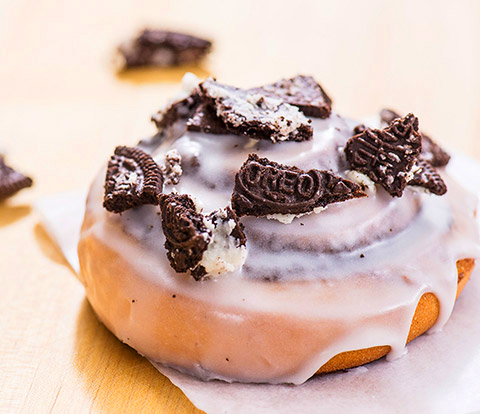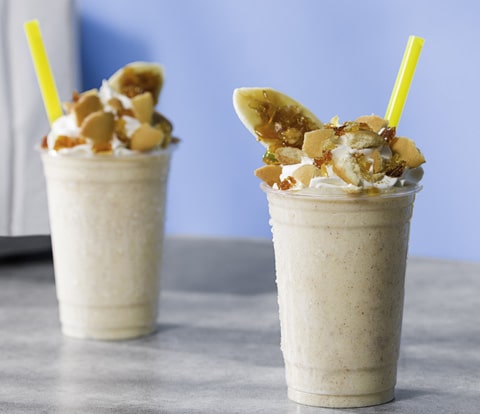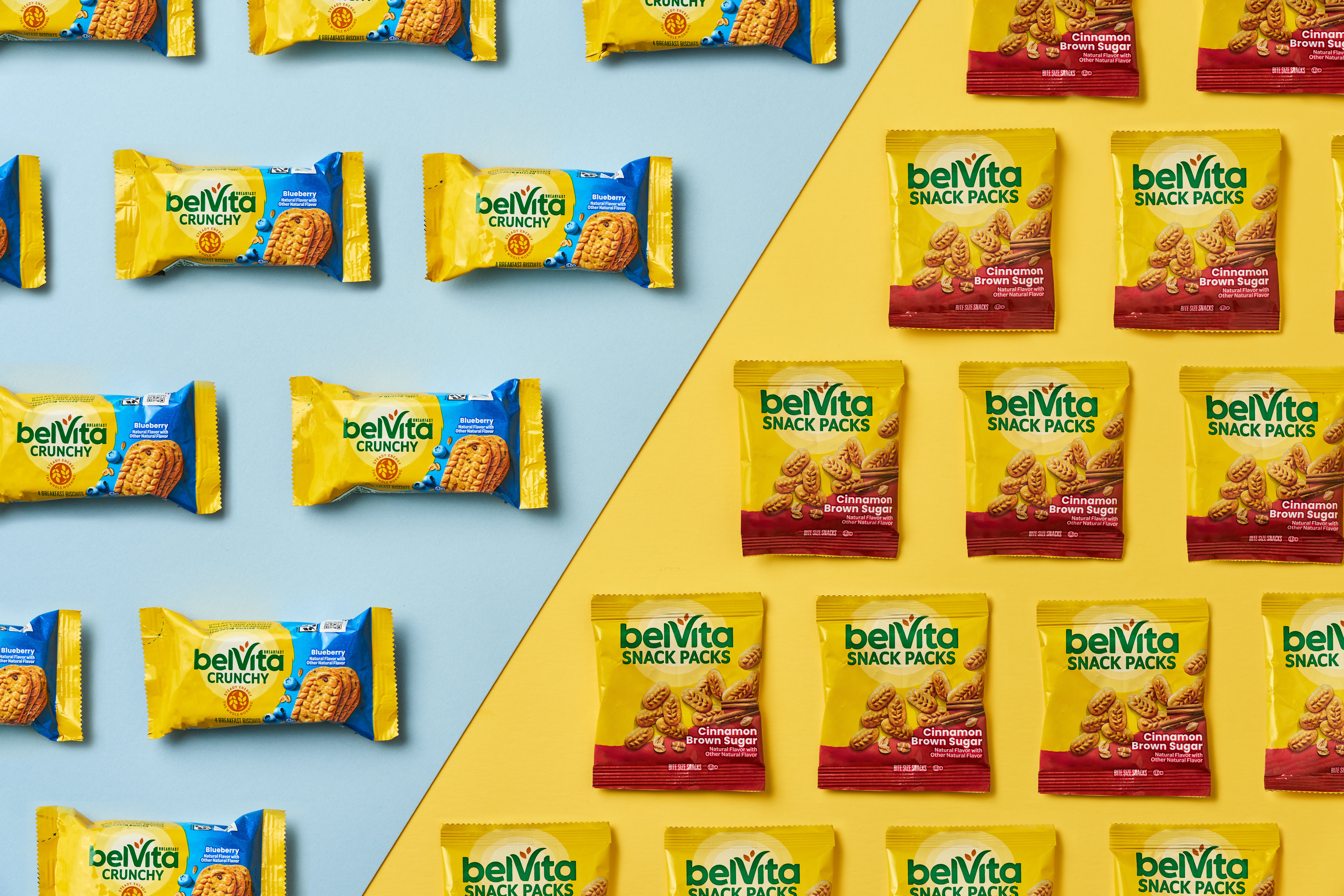Posted in Millennials on August 29, 2023
 Parents of Gen Alpha children involve their kids in purchasing decisions—including where to dine out, according to a survey conducted by data provider Morning Consult.1,2
Parents of Gen Alpha children involve their kids in purchasing decisions—including where to dine out, according to a survey conducted by data provider Morning Consult.1,2
Separate research found the majority of parents (71%) say their children’s opinion is very or somewhat influential when the family is selecting a restaurant.3
Parents’ goal in including kids’ input is to help guide their choices, instead of just dictating them, according to Emily Moquin, food and beverage analyst at Morning Consult, which could ultimately endear Gen Alpha members to certain eateries.
“It’s not just kids repeatedly asking for a particular snack or restaurant until their parents give in,” Moquin said in an interview with Mondelēz Foodservice. “Parents are trying to give Gen Alphas a chance to exercise critical thinking and decision-making skills. As Gen Alphas learn to consider their options and evaluate whether a brand or product meets their needs, there’s a good chance that brand earns their continued loyalty.”
Currently, 43% of Gen Alpha eat fast food at least once a week—more often than most U.S. adults. Gen Alpha members also have takeout and dine at restaurants more frequently. They’re also poised to be a significant foodservice customer base in the future: With more than 2.8 million babies being born each week globally, the generation is expected to become the largest on record.1,4
Given Gen Alpha’s collective buying power potential, operators may be able to attain strong sales by catering to the age group’s dining preferences, which can touch on some of the following factors.
Nourishing Nosh
Raised by millennial parents with a propensity for healthy eating, Gen Alpha may lean toward menu options that feature elements such as natural or plant-based ingredients. Approximately 80% of parents say they’d like their children to develop a taste for healthier foods and eat a balanced diet.2, 5
Recent research indicates a number of Gen Alpha want to; 77% of middle and high school students say they’d be more likely to eat school meals if they had to meet specific nutrition and healthy eating standards.6
Children being able to eat fresh foods and fruits and vegetables are the two top goals parents rate as being very important in regard to what foods they buy; 25% also, however, feel limiting kids’ exposure to restaurants should be a consideration.2
As a result, operators may want to highlight any on-site preparation practices, such as the hand-mashing process Chipotle uses to make its six-ingredient guacamole.7 Boosting the amount of produce-based menu items available on kids menus is also a good idea, such as McDonald’s automatically adding apples to Happy Meals.8
Components that Represent Memories—and Other Cultures
Millennials’ love for nostalgia has been well-documented; 77% say they’ll purchase a product because of it—and nostalgic sweets are the top dessert trend millennials are interested in trying.9
A number of foodservice operators have introduced desserts made with branded ingredients millennials may have enjoyed during their childhood. Wawa food markets, for example—which offered a limited-time lineup featuring a shake, frozen cappuccino, sundae and other items made with CHIPS AHOY! in 2021—serves ice cream parfaits that contain OREO cookie pieces, caramel, and other ingredients.10,11 One of the desserts Friendly’s offers for kids, a fresh take on the classic dirt cake recipe dubbed Worms & Dirt Friend-Z, features a mix of OREO Cookie Pieces, vanilla ice cream and sour gummy worms.12
Millennials’ interest in items that were popular during their youth could help introduce their children to a number of retro foods—and pique kids’ interest in restaurant menu items that feature some of the iconic brands as an ingredient.
Another ordering option—internationally inspired items—could also resonate with younger diners. Although Italian has historically been Americans’ favorite, Gen Alpha’s foodie-focused parents were the first generation to prefer another kind of cuisine—Mexican fare—so it’s not too surprising that Gen Alpha also seems to be gravitating toward global dishes.13
Half of parents say their children like cuisine from countries such as Peru, India, Vietnam and Morocco; lunches served at K-12 schools now include flavors from recipes traditionally served in China, Mexico and other locales.14,15
Some restaurants have also expanded their offerings for younger diners to include more globally inspired eats. Between 2016 and 2019, for example, the amount of Mexican food that appeared on kids’ menus increased by 10%.14
Instead of just offering the standard ice cream and sundae sweet fare for younger diners, three of French bistro Mon Ami Gabi’s four U.S. locations have included chocolate mousse on their kid’s dessert menu.16
Millennial parents, who came of age alongside tremendous growth of fast-casual concepts in the 2010s, have always had access to more restaurants, [and] diversity in cuisines and formats,” Moquin says. “Millennials’ penchant for restaurants will likely stick with their Alpha kids, who will have even more choices.”
Digitized Dining
Gen Alpha favors certain eateries—notably McDonald’s, which was named as kids’ favorite in Morning Consult’s survey. Some parents cited aspects like its Happy Meals as a reason.2
The fast food chain has some selling points for parents, too—including a speedy tech-infused takeout experience. The company has been adding customer-facing technology such as AI-powered voice recognition ordering capabilities at some locations, reportedly reducing order fulfillment time by almost a minute.17
Technology—something, as digital natives, Gen Alpha members grew up using—may be an element they’ll expect restaurant interactions to increasingly involve.
“Operators should consider Gen Alpha’s digital connectivity as they think about tech investments and reaching these consumers in the future,” Moquin says. “For instance, already 54% of Gen Alphas own a tablet.”
While many members of the demographic are still fairly young, Gen Alpha’s impact on the restaurant industry is clearly beginning to be felt, and it isn’t insignificant. More than a third of operators—35%—say Gen Alpha is already extremely or very important to their business.5
As more of the generation moves toward adulthood and gains greater spending power, they’ll be looking for dining options that suit their specific needs. Restaurants that proactively prepare by introducing global dishes, enhanced tech tools and other Gen Alpha-friendly amenities can begin building brand awareness now—which could help them create an entirely new sector of customers, who hopefully will loyally patronize the business on an ongoing basis for years to come.
For more demographic insights that can help shape your operations, subscribe to our Let’s Chat Snacks newsletter.
1 Generation Alpha, Britannica, June 28, 2023
2 A Brand’s Guide to Gen Alpha, Morning Consult, March 2023
3 “U.S.: Measuring Kids’ Influence on Parents’ Purchasing Decisions,” YouGov, May 11, 2023
4 The Business Case for Understanding Generation Alpha, Harvard Business Review Analytic Services, 2023
5 2023 Food Trends, Datassential, 2022
6 “What Do Teens Really Think About School Meals?”, No Kid Hungry, 2022
7 “Chipotle Makes It Easier Than Ever To Get Free Guac On National Avocado,” Chipotle Newsroom, July 28, 2021
8 Baertlein, Lisa, “McDonald's Happy Meals get apples, fewer fries,” Reuters, July 26, 2011
9 Desserts: Keynote Report, Datassential, 2023
10 Miller, Bob, “Wawa Introduces New Chips Ahoy! Handcrafted Beverages And Treats,” Chew Boom, July 16, 2021
11 Frozen Beverages, Wawa Menu
12 Warms & Dirt Friend-Z, Friendly’s Menu
13 2022 Trends: Our Changed Future, Datassential, 2021
14 All About the Kids, Part 1: Generational Comparisons & Their Flavor Profiles, Fona International, 2020
15 “What’s on the Menu? Chartwells K12 Reveals Top 10 Food Trends for 2023,” Chartwells, 2022
16 Bethesda Menu, Mon Ami Gabi
17 “The Metaverse And Digital Transformation At McDonald’s,” Forbes, June 22, 2022
18 “Under the influence: what drives Generation Alpha to spend?,” Wunderman Thompson, 2019

















